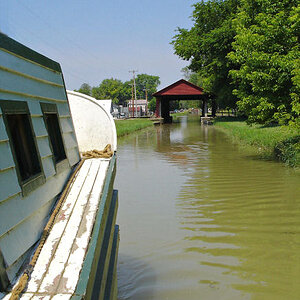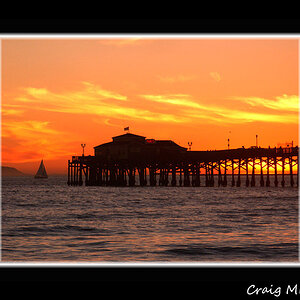i want to know how to read & understand those dslr lenses who have millimeters in their lenses, i have a 10x zoom cam & what is equivalent of it in mm?? i have plans to get a dslr when my budget permits me, but what lens should i get to have a 10x zoom, or 12x zoom?
Navigation
Install the app
How to install the app on iOS
Follow along with the video below to see how to install our site as a web app on your home screen.
Note: This feature may not be available in some browsers.
More options
You are using an out of date browser. It may not display this or other websites correctly.
You should upgrade or use an alternative browser.
You should upgrade or use an alternative browser.
from mm zoom to n x's zoom
- Thread starter emo
- Start date
Soocom1
Been spending a lot of time on here!
- Joined
- Feb 27, 2006
- Messages
- 3,253
- Reaction score
- 1,489
- Can others edit my Photos
- Photos NOT OK to edit
Ok this one is going to be involved...
The 'x' on your camera stands for the number of times the image is magnified compared to how you would see it un magnified.
Focal point is the spot where the light that is coming into the camera becomes a sharp point. (Think of frying ants under a magnafying glass.)
That hot spot that cooks the ants is the focal point of the magnafying glass. The same thing is happening in your camera.
The millimeter number you refer to is the focal distance of the lens. If you take off a SLR lens, look at the rear glass element, and then turn the focus ring, you will see that elemnt move back and forth. That moves the focal POINT so that you can focus on differant subjects at differan distances. (This is the main advantage of a self contained lens vs. the old Bellows system.) The magnafication effect in a SLR lens comes from how far away from the film the focal point is. The further away, the further the focal area becomes, and thus, it magnafies the image onto the image capture area in relation to the distance of the focal point. This is what makes a zoom lens a zoom lens.
The magnification of the 10x optical, or 12x digital whatever means that the image is being enlarged electronically inside the camera. Problem is that it makes the picture grainy.
Some links...
http://www.frogprints.co.nz/help/focal.cfm
http://en.wikipedia.org/wiki/Zoom_lens
The 'x' on your camera stands for the number of times the image is magnified compared to how you would see it un magnified.
Focal point is the spot where the light that is coming into the camera becomes a sharp point. (Think of frying ants under a magnafying glass.)
That hot spot that cooks the ants is the focal point of the magnafying glass. The same thing is happening in your camera.
The millimeter number you refer to is the focal distance of the lens. If you take off a SLR lens, look at the rear glass element, and then turn the focus ring, you will see that elemnt move back and forth. That moves the focal POINT so that you can focus on differant subjects at differan distances. (This is the main advantage of a self contained lens vs. the old Bellows system.) The magnafication effect in a SLR lens comes from how far away from the film the focal point is. The further away, the further the focal area becomes, and thus, it magnafies the image onto the image capture area in relation to the distance of the focal point. This is what makes a zoom lens a zoom lens.
The magnification of the 10x optical, or 12x digital whatever means that the image is being enlarged electronically inside the camera. Problem is that it makes the picture grainy.
Some links...
http://www.frogprints.co.nz/help/focal.cfm
http://en.wikipedia.org/wiki/Zoom_lens
Unimaxium
TPF Noob!
- Joined
- Nov 13, 2004
- Messages
- 2,689
- Reaction score
- 22
- Website
- www.flickr.com
- Can others edit my Photos
- Photos OK to edit
The magnification of the 10x optical, or 12x digital whatever means that the image is being enlarged electronically inside the camera. Problem is that it makes the picture grainy.
That's not quite right. When it says optical zoom, it's the amount of zoom you're actually getting from the lens. The digital zoom is the only kind that means the image is being enlarged electronically.
When a camera says it has a 10x optical zoom, for example, it means that the difference from the shortest to longest focal length is 10x. There is no way to directly correlate this number to mm, because it depends on what the lens's widest or longest length is. For example, it could be an 80-800mm lens, or a 50-500mm lens, or a 12-120mm lens, or anything else.
That said, you can probably look up the specifications of your camera and it will tell you what focal length the lens has.
stingray
TPF Noob!
- Joined
- Oct 28, 2005
- Messages
- 179
- Reaction score
- 0
As far as I recall, just as Uni said it's all sort of in ratios. The amount of times zoom you get depends on the ratio between the size of the sensor (the light sensitive bit) and the lens. The numbers in mm on the lens are for 35mm cameras because that is considered a 1:1 ratio... so they can't really write that on the digital cameras unless they are FULL FRAME dslrs. instead they use the xMagnification system and often will have something like "35-400" equivalent (a la my Panasonic Lumix). I think however, approximately a 400mm focal lens will be just over 11x zoom... and a 300mm lens about 8x. Please correct me if i'm wrong but for a full frame or 35mm camera you can just divide the focal length by the film plane size to find the zoom amount. Of course for most DSLR's there is a crop factor... END RANT
Unimaxium
TPF Noob!
- Joined
- Nov 13, 2004
- Messages
- 2,689
- Reaction score
- 22
- Website
- www.flickr.com
- Can others edit my Photos
- Photos OK to edit
stingray said:As far as I recall, just as Uni said it's all sort of in ratios. The amount of times zoom you get depends on the ratio between the size of the sensor (the light sensitive bit) and the lens. The numbers in mm on the lens are for 35mm cameras because that is considered a 1:1 ratio... so they can't really write that on the digital cameras unless they are FULL FRAME dslrs. instead they use the xMagnification system and often will have something like "35-400" equivalent (a la my Panasonic Lumix). I think however, approximately a 400mm focal lens will be just over 11x zoom... and a 300mm lens about 8x. Please correct me if i'm wrong but for a full frame or 35mm camera you can just divide the focal length by the film plane size to find the zoom amount. Of course for most DSLR's there is a crop factor... END RANT
This is where it gets more complicated.
First off, I think you're a bit confused about the ratios. A 10x zoom lens does not refer to the ratio between the sensor and the lens, but rather to the ratio between the shortest and longest focal lengths of the lens. For example, if you have a camera that can zoom out to 10mm and all the way in to 150mm, then it is 15x because 10mm*15x=150mm. Likewise, a 20-300mm lens is 15x, and a 5-75mm lens (if such a thing exists) would be 15x.
The sensor size becomes important when you're trying to compare lenses on different cameras. You see, in the olden days before digital cameras, 35mm SLRs all used the same size film. So a 50mm lens on one 35mm camera would give you the same field of view as a 50mm lens on another camera. But digital cameras these days come with sensors in place of the film, and since it is up to the individual camera manufacturers to put the sensors in their cameras, they can use proprietary sizes. This means that on some cameras a 50mm lens might give you a 46° FOV, while on another it might give you a 33° FOV, or on another a 13°FOV, etc. So these days many cameras list both an actual focal length for a lens and an "equivalent" focal length (or a crop factor if it has interchangable lenses), with the equivalent being equal to the length of a lens that would give you the same FOV on a 35mm camera. To take stingray's Lumix as an example, looking up the specs of the camera I find that it has a 6-75mm lens, which is approximately equal to 12x (75mm/6mm = 12.5x). However, because I don't know the actual size of the sensor, I have no way of telling exactly how wide or how zoomed in I can go with that lens. But the specifications here also list an equivalent focal length of 35mm-420mm, which is useful because I know what that would look like on a 35mm camera. I can also calculate that the sensor has a ~6x crop factor ( 35mm/6mm = 6x ), meaning that it's 6 times smaller than a 35mm frame of film. So now I know how much I can magnify my subject by comparing it to the 'reference' 35mm length.
kfoster
TPF Noob!
I understand how you are confused. Unimaxium gave a nice explanation of how to get a 10x zoom. So please reread her stuff.
Maybe I can help you understand it a little bit better, but I will need some information from you first.
What type of photography are you going to be doing? Landscapes? Macro? Portraiture? Wildlife? All the above?
What camera do you have?
Hopefully with this information I can help you.
Maybe I can help you understand it a little bit better, but I will need some information from you first.
What type of photography are you going to be doing? Landscapes? Macro? Portraiture? Wildlife? All the above?
What camera do you have?
Hopefully with this information I can help you.
kfoster said:I understand how you are confused. Unimaxium gave a nice explanation of how to get a 10x zoom. So please reread her stuff.
Maybe I can help you understand it a little bit better, but I will need some information from you first.
What type of photography are you going to be doing? Landscapes? Macro? Portraiture? Wildlife? All the above?
What camera do you have?
Hopefully with this information I can help you.
right now i have a Finepix S5100, i have plan to go for a 350d or d50 when i have enough money for it.. i'm almost want everything in photography except for Macro..
kfoster
TPF Noob!
Okay, I did some research on your camera. It has a 10x zoom, so I would assume why you are saying you want a 10x zoom.
The fuji has a focal length of 5.7mm to 57mm (10x) which converts to a 35mm equivalent to 37mm to 370mm (again 10x). As described by others any zoom lens that has a 10:1 ratio from wide angle to telephoto would be a 10x lens. A 50mm to 500mm is a 10x lens, a 28mm to 280mm is a 10x zoom. When you look at lenses for a DSLR like the D50 or Rebel XT you are only going to see lens focal lengths, never are you going to see a magnification ratio like you see on your fuji.
Now lets assume you want to have the same coverage on your DSLR as you did on your fuji. The fuji has a very small sensor so the lens can have a small focal length. But in order to compare it to other cameras or lenes you need to convert it to a 35mm standard. Thats where the 37mm to 370mm comes into play. To get something similar for a D50 lets say, you would need to find something close to a 20mm to 200mm. The d50 has a crop factor of 1.5x, so a 20mm to 200mm would convert to 35mm to 350mm. You still have your 10x mag and it would give you similar field of view as your fuji.
There isnt anyone that makes a 20mm to 200mm lens for a DSLR. But Sigma, Tamron, and Nikon all make 18mm to 200mm zoom lenses.
As convient as these lenses are they are not the best lenses to get. There is a trade off for the convience. Sharpness, and contrast are two things that you easily give up for the convience. Prime lenses and zooms that cover less focal range are much better options.
I hope this is what you were looking for. I really dont know of any better way to explain it.
The fuji has a focal length of 5.7mm to 57mm (10x) which converts to a 35mm equivalent to 37mm to 370mm (again 10x). As described by others any zoom lens that has a 10:1 ratio from wide angle to telephoto would be a 10x lens. A 50mm to 500mm is a 10x lens, a 28mm to 280mm is a 10x zoom. When you look at lenses for a DSLR like the D50 or Rebel XT you are only going to see lens focal lengths, never are you going to see a magnification ratio like you see on your fuji.
Now lets assume you want to have the same coverage on your DSLR as you did on your fuji. The fuji has a very small sensor so the lens can have a small focal length. But in order to compare it to other cameras or lenes you need to convert it to a 35mm standard. Thats where the 37mm to 370mm comes into play. To get something similar for a D50 lets say, you would need to find something close to a 20mm to 200mm. The d50 has a crop factor of 1.5x, so a 20mm to 200mm would convert to 35mm to 350mm. You still have your 10x mag and it would give you similar field of view as your fuji.
There isnt anyone that makes a 20mm to 200mm lens for a DSLR. But Sigma, Tamron, and Nikon all make 18mm to 200mm zoom lenses.
As convient as these lenses are they are not the best lenses to get. There is a trade off for the convience. Sharpness, and contrast are two things that you easily give up for the convience. Prime lenses and zooms that cover less focal range are much better options.
I hope this is what you were looking for. I really dont know of any better way to explain it.
Rob
TPF Noob!
emo said:thanks alot!! i'm enlightened now.. can you give me a link about lenses? the one that gives meaning of those abbreviations... i think i should stick w/ my P&S :blushing:
With P&S cameras, recreating the zoom lengths on a SLR means you will probably want lens(es) in the range 28-400 ish.
I would recommend getting a 28-70 and a 70-300 or so, if you are on a tight budget. If you were going for a 350D and you've got money, then perhaps a 28-70 f2.8, then a 70-200 f2.8 and the 100-400 f4.5-5.6 (gonna be an expensive job though!).
I have found the cheapo kit lens is OK, the 18-55mm, so perhaps start with that and add a longer zoom when you've got the money together?
Generally speaking, look at what Uni said about the zoom range but also bear in mind that, in terms of say binoculars, zoom factor refers to amount of magnification. A 50mm lens gives approximately 1x magnification, a 200mm lens could then be expressed as 4x normal, a 400mm lens 8x etc. This is generally all manufacturer marketing crap though - in most cases there is digital magnification as well as optical.
The all-encompassing beginners guide will be out soon ish and will tackle many of these kind of subjects in detail.
Rob
Rob
TPF Noob!
emo said:thanks Rob, even if i sell my Kidney i cannot buy those lenses :lmao: it seems that i will spend years taking pics. with my Finepix
You are doing well with it though. Avoid selling the organs for a bit - they'll drop in price soon enough! :lmao:
Rob
Most reactions
-
 215
215 -
 190
190 -
 185
185 -
 184
184 -
 174
174 -
 155
155 -
 143
143 -
 127
127 -
 123
123 -
 94
94 -
 78
78 -
 78
78 -
 76
76 -
 75
75 -
I
67
Similar threads
- Replies
- 2
- Views
- 3K












